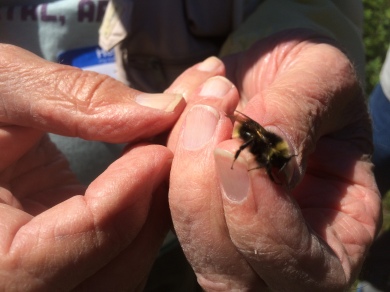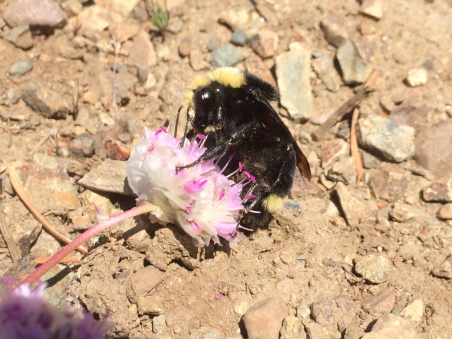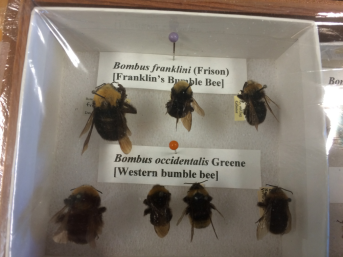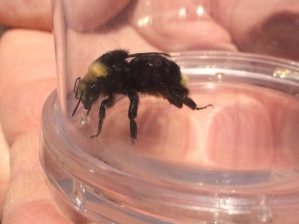First published on Suzie’s Klamath-Siskiyou Seeds blog on June 18, 2016. All photos by Suzie Savoie.

Robbin Thorp holding a male Fernald cuckoo bumble bee (Bombus flavidus). Because male bumble bees do not have a stinger you can gently hold one to feel it “buzz!”

SFI’s Native Bees of the Siskiyous class netting native bees for observation at Page Mountain. We found different species of bees on flowering plants such as snowbrush (Ceanothus velutinus) and whipplevine (Whipplea modesta).
Have you ever wanted to learn more about native bees and native plant pollination? I highly recommend taking Siskiyou Field Institute’s (SFI) Native Bees of the Siskiyous course, taught by entomologist Dr. Robbin Thorp. Last weekend I attended this course and was really glad I did. Being a lover of native plants and natural ecosystems, it’s only natural to want to understand as much as possible about the native pollinators these plants depend on for their reproduction, and vice versa — the mutualism between bees and flowering plants is fascinating!

World-renowned native pollinator specialist Robbin Thorp, UC Davis emeritus professor of entomology, was the recipient of the 2015 UC Davis Distinguished Emeritus Award for his outstanding scholarly work and service accomplished since his retirement in 1994. He is the co-author of Bumble Bees of California: An Identification Guide (2014, Princeton University Press) and California Bees and Blooms: A Guide for Gardeners and Naturalists
(2014, Heyday Books).

Robbin Thorp’s collection of the rare western bumble bee (Bombus occidentalis) and the possibly extinct Franklin’s bumble bee (Bombus franklinii). Note the size variations between queens, males and females. The queens are the largest.

Vosnesensky bumble bee (Bombus vosnesenskii) queen in a vial for observation in the field. She was collected on June 11th and was estimated to be about a month old. She will be inseminated by a male, fatten up, and soon go into a hibernation that will last until early spring. This queen was larger than any other bee we collected during the class. She was a beauty!